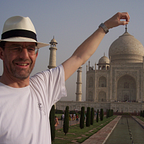Everything Is Possible For An Eccentric, Especially When He Is English — Part Seventeen | windowthroughtime on WordPress.com
Anna Maria Helena, comtesse de Noialles (c1826–1908)
Wealth does not make you immune to the lottery of life. Take the curious case of the English noblewoman, Anna Coesvelt, who in 1845 married Charles-Antonin, the second son of the duc de Mouchy and prince-duc de Poix. The marriage did not last long and worse still, their only child died at birth. This tragedy probably left Anna with a lasting desire to have a child, something she resolved in an extraordinary way.
Taken by a portrait of a child by Ernest Hebert, hanging in the Paris Salon in 1863, Anna wanted to buy it. Unfortunately, it had already been sold but undaunted, she made enquiries of the model, one Maria Pasqua Abruzzesi with the intention of adopting her. Abruzzesi’s father agreed to the transaction for two bags of gold, insisting that his daughter be raised as a Catholic and as an equal. Anna agreed, the deal was struck and the poor girl was taken to England where her upbringing was far from conventional.
Maria was only allowed to wear loose-fitting clothing for fear of constricting her circulation — an imposition which at least exempted the child from wearing a school uniform at her boarding school. Believing that children who drank milk were less likely to become drunkards, Anna provided Maria with a supply of fresh milk from her herd of dairy cows. The cows served another purpose, being encouraged to graze near the house. The open windows ensured that the aroma from the trumping cattle circulated through the rooms, Anna believing that methane was good for the child’s health.
Anna herself followed an unusual health regimen. She would have a string of fresh onions hung from her bedroom door to ward off infections but fearing this was not effective enough, would flee England when the leaves started to drop from the trees, thinking this was a sign that the air was not healthy and influenza was about. To prevent the onset of bronchitis, she would eat prodigious quantities of herring roe. Anna was also concerned about her appearance and to prevent wrinkles would wrap stockings (silk, natch) stuffed with squirrel fur around her head.
Other eccentricities included only eating food if it was served to her whilst she was sitting behind a two-foot high silk screen and sleeping with a loaded gun by her bedside. Anna enjoyed a glass of port — who doesn’t? — but insisted that it was served to her at sunset, mixed with some sugar and diluted by fresh rainwater. She was also concerned about her eyesight and commanded her servants to wrap a piece of blue silk around her brass bedroom door as protection against excessive glare. When it fell off, it would cause her to shriek in terror.
In her will, Anna set aside some money to create an orphanage for the daughters of clergymen. Needless to say, anyone staying there didn’t have a normal existence. They were examined by phrenologists to ensure that they were “firm spirited and conscientious,” were prevented from being vaccinated against contagious diseases and those under the age of ten were taught no mathematics other than the multiplication tables.
Anna did use her wealth to some good, funding Elizabeth Blackwell in her struggles to become the first female doctor in the United States and was a major shareholder and financier of the English Woman’s Journal which, in the 1850s, campaigned on women’s employment and equality issues. But she was an odd fish by anybody’s standards.
Originally published at windowthroughtime.wordpress.com on February 19, 2018.
